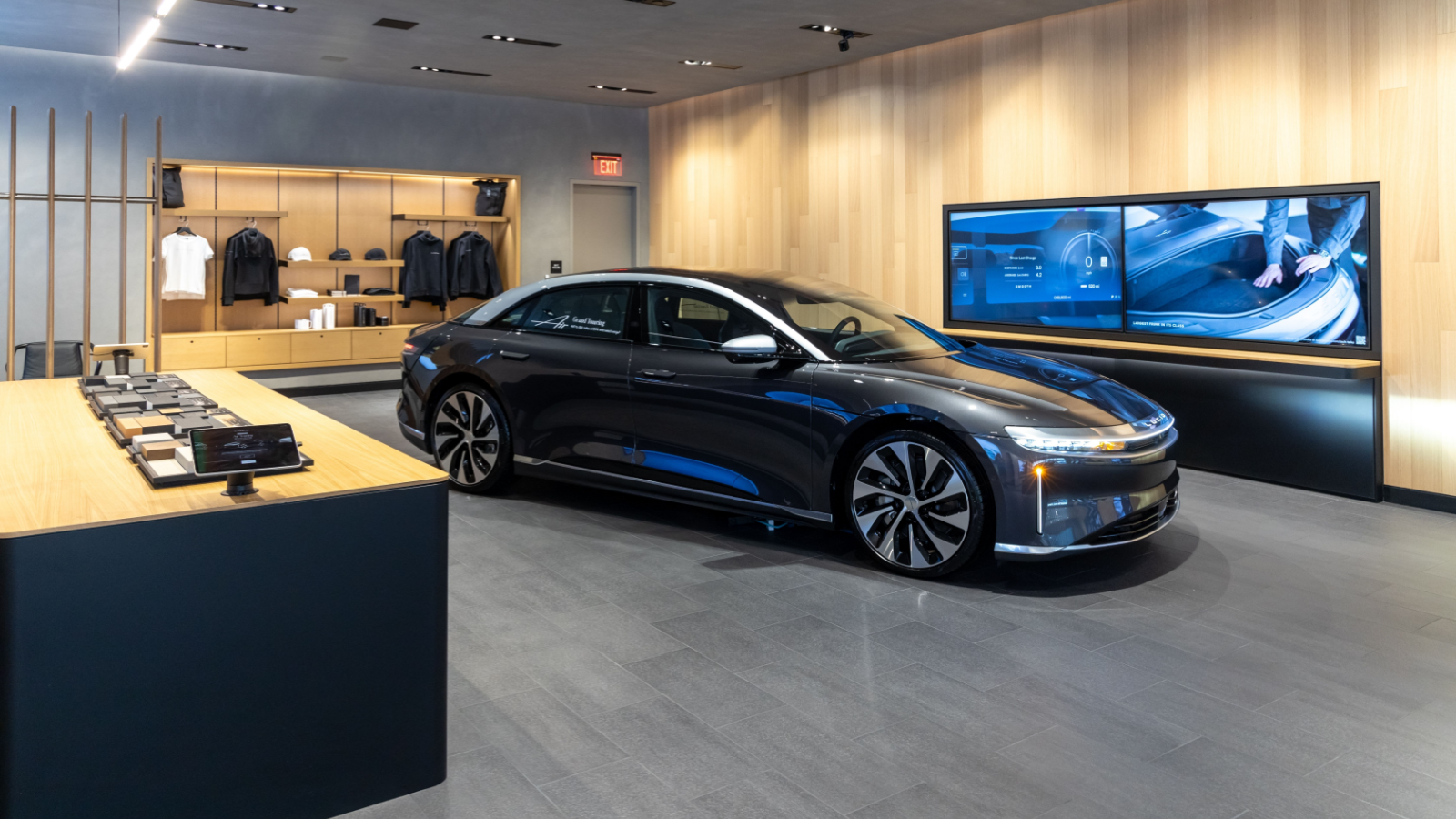
While I’ve generally been optimistic about premium electric vehicle (EV) manufacturer Lucid (NASDAQ:LCID), facts are facts. As circumstances stand at time of writing, LCID has been a disappointment. Since the start of the year, Lucid stock has given up more than 34% of equity value. While it features many positives, there are also counteracting negatives that add unwanted ballast to the business.
Fundamentally, management decided to target the upper-income crowd first. Per the company’s website, the base model Lucid Air starts at “only” $69,900. Of course, when you consider that the U.S. median household income is under $75,000, that’s a massive price to pay. However, the thinking likely was that it will take many years for advanced technologies and economies of scale to make EVs relatively accessible to modest-income households.
Until then, the upstart EV manufacturer might as well grab available market share. After years of competitiveness, it can develop brand awareness and power. People will desire the LCID label and that’s when the company can start offering entry-level models. It’s taking a page out of German luxury carmakers’ playbook and it made sense for Lucid stock.
Unfortunately, circumstances just haven’t panned out favorably for the enterprise and the broader EV sector. Nevertheless, that doesn’t mean Lucid stock is not a viable prospect. Quite the contrary, I’m bullish on its speculative short-term trading appeal.
Lucid Stock Suffers From a Mixed Profile
Back in 2022, the Lucid Air won automotive publication MotorTrend’s Car of the Year award. At the time, one of the standout attributes regarding the Air was its engineering excellence. In part, the auto magazine highlighted the EV’s unique heat management and cooling systems which effectively handle the loads associated with full power.
Further, the publication discussed the incredible efficiency of Lucid’s underlying powerplant. Depending on the trim, the company’s EVs can deliver around 500 miles of range. That’s a huge deal when range anxiety– the fear of losing power before finding a public charging station — prevents many would-be customers from switching to electrification.
And while it’s a subjective attribute, the Lucid in my opinion is absolutely stunning. And it’s not just my opinion. Several automotive critics both professional and of the influencer variety have expressed similar sentiments. Indeed, in another MotorTrend article, writer Zach Gale had the following to say about the experience driving a Lucid in Los Angeles, California:
“In the wealthier parts of LA, the Mercedes-Benz S-Class is a victim of its own success. It feels like the executive sedan is everywhere, whereas seeing another Lucid is an event. When you’re buying a six-figure car, that’s big.”
So, why is Lucid stock floundering? Part of the reason is that the vehicles have electronic gremlins that really shouldn’t materialize in such an expensive vehicle. Gale described temporary losses of important functionalities and also mentioned getting stranded twice.
Tellingly, Gale mentioned that the advertised range can only be achieved through “careful driving.” Anything else and you’re getting significantly less: about 300 to 350 miles. That’s still good but it is not 500 miles.
Don’t Give Up on LCID Stock Yet
Against the bigger picture, it’s admittedly tough to bet heavily on Lucid stock. As CNBC pointed out earlier this year, the robust sentiment for EV manufacturing has faded. It’s not that enterprises have given up on the sector. However, it’s also clear that legacy automakers have begun scaling back their electrification ambitions.
What’s more, hybrid vehicles — which combine combustion-based technology with battery-powered propulsion systems– have seen sales skyrocket. Hybrids offer the best of both worlds: the efficiency of EVs and the infrastructural convenience of traditional vehicles. As my InvestorPlace colleague Joel Baglole pointed out, that’s a big deal.
Now, where I will respectfully disagree with Baglole is the assertion that Lucid stock may be headed toward the junkyard. Let’s be honest, I can understand the sentiment, especially when you look at the financial picture. However, LCID may also benefit from speculative trading fervor.
With the rise of meme stocks, it is not an impossible prospect for LCID to shoot higher. According to Fintel, Lucid stock features a short interest of 28.05% of its float. Further, the short-interest ratio clocks in at 26.79 days to cover.
Any short interest metric above 20% is considered extremely high. Further, the short ratio means that it would take bearish traders almost 27 market sessions to unwind their bearish wagers. Remember, exiting a short position requires buying to close. As the bears exit, it actually creates upward pressure on the share price.
If you don’t want to invest in Lucid stock, that’s totally fine. I don’t think anyone will blame you. However, please, for your own good avoid directly shorting LCID. Such a trade can end up very badly for the pessimist.
The Takeaway: Lucid Stock Might Still Shift into Higher Gear
There’s no question Lucid stock has been stuck in neutral. Since a poor start to the year, it has effectively gone sideways since Jan. 18. Much of the problem centers on the business: it features a mixed bag of pros and cons. However, the disappointing performance shouldn’t be an excuse to directly short LCID. With meme-trading sentiment running strong, it’s quite possible that the upstart EV maker could fly higher.
On the date of publication, Josh Enomoto did not have (either directly or indirectly) any positions in the securities mentioned in this article. The opinions expressed in this article are those of the writer, subject to the InvestorPlace.com Publishing Guidelines.



